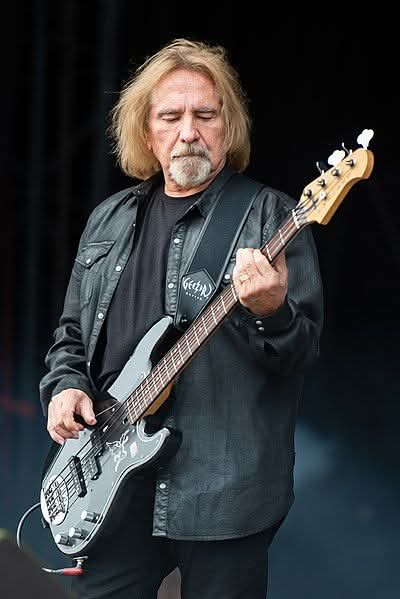What Does the Godfather of Metal Sound Like on His Final Bow?
On February 4th, 2017, the air inside Birmingham’s Genting Arena was thick with anticipation, distortion, and decades of legacy. As Black Sabbath took their final bow in their hometown, one element rumbled beneath every riff and roar: Geezer Butler’s bass rig — a towering monument to the sound that birthed metal.
It wasn’t just powerful. It was legendary.
A Legacy in Low-End
Geezer Butler isn’t merely a bassist. He’s the godfather of heavy, doom-laden bass — the architect of subterranean frequencies that gave Black Sabbath their seismic weight. Across nearly five decades, his sound evolved from growling fuzz to a sculpted, earthquaking force. And for the final Sabbath show, he didn’t hold back. He came armed with a bass rig that was less “gear” and more “war machine.”
The Final Rig: A Monument to Metal
Geezer’s final live rig was a carefully chosen blend of modern tech and vintage grit — a sonic juggernaut tailored to fill arenas with thunder. At its heart was a trio of Lakland and custom Yamaha BB-series basses, each strung with heavy-gauge strings and tuned down to C# standard — Sabbath’s signature gloom key.
These basses funneled into a pedalboard steeped in doom heritage. An Ampeg SCR-DI sculpted his tone with warm vintage EQ, while a Dunlop Geezer Butler Signature Cry Baby Wah gave his lines that expressive, haunting wail. A Tech 21 SansAmp RBI delivered the overdriven growl that had come to define his modern tone — dirty but articulate, brutal but beautiful.
But the real muscle came from his amplification stack.
Powering the Apocalypse
Butler’s final amp setup was centered on a pair of Ashdown ABM EVO IV 1200 heads, each pushing through Ashdown 8×10 cabs stacked like monoliths. These weren’t just amps — they were cathedrals of doom, each note resonating like a sermon. The Ashdowns gave Geezer’s tone a brutal, clear presence that never got lost in the wall of Iommi’s guitars. The low end didn’t just rattle ribcages — it redefined the idea of bottom-end in live metal.
A parallel clean signal ran through a Darkglass Microtubes 900, delivering surgical clarity and articulation without sacrificing punch. Together, these signals formed a tone that could shake the earth and still slice clean through the mix.
Stage-Shaking, Soul-Crushing Tone
Throughout the night, Geezer’s rig wasn’t just heard — it was felt. During “N.I.B.,” his distorted intro solo danced through the speakers like a demon conjuring a spell. In “War Pigs,” his bass snarled beneath Iommi’s riff like the growl of a war machine. And on “Children of the Grave,” his low end thundered like tectonic plates shifting beneath the crowd.
Even on Sabbath’s final song, “Paranoid,” the rig didn’t relent. It thundered forward, relentless, a black monolith marching into history. When the last note rang out and Geezer set down his bass, it wasn’t just the end of a concert — it was the closing chapter of a sonic legacy carved into stone and distortion.
The Sound of Finality
Geezer Butler’s final rig was more than a collection of components. It was the culmination of decades of evolution, experimentation, and raw, uncompromising heaviness. It was the last word in doom — a sound forged in Birmingham’s bleak industrial shadows, refined on stages across the world, and delivered one final time with unrelenting force.
So, what does the godfather of metal sound like on his final bow?
He sounds like thunder baptized in distortion.
He sounds like the end of the world, echoing into eternity.
He sounds like Geezer Butler — and that, forever, will be the sound of heavy metal’s soul.









